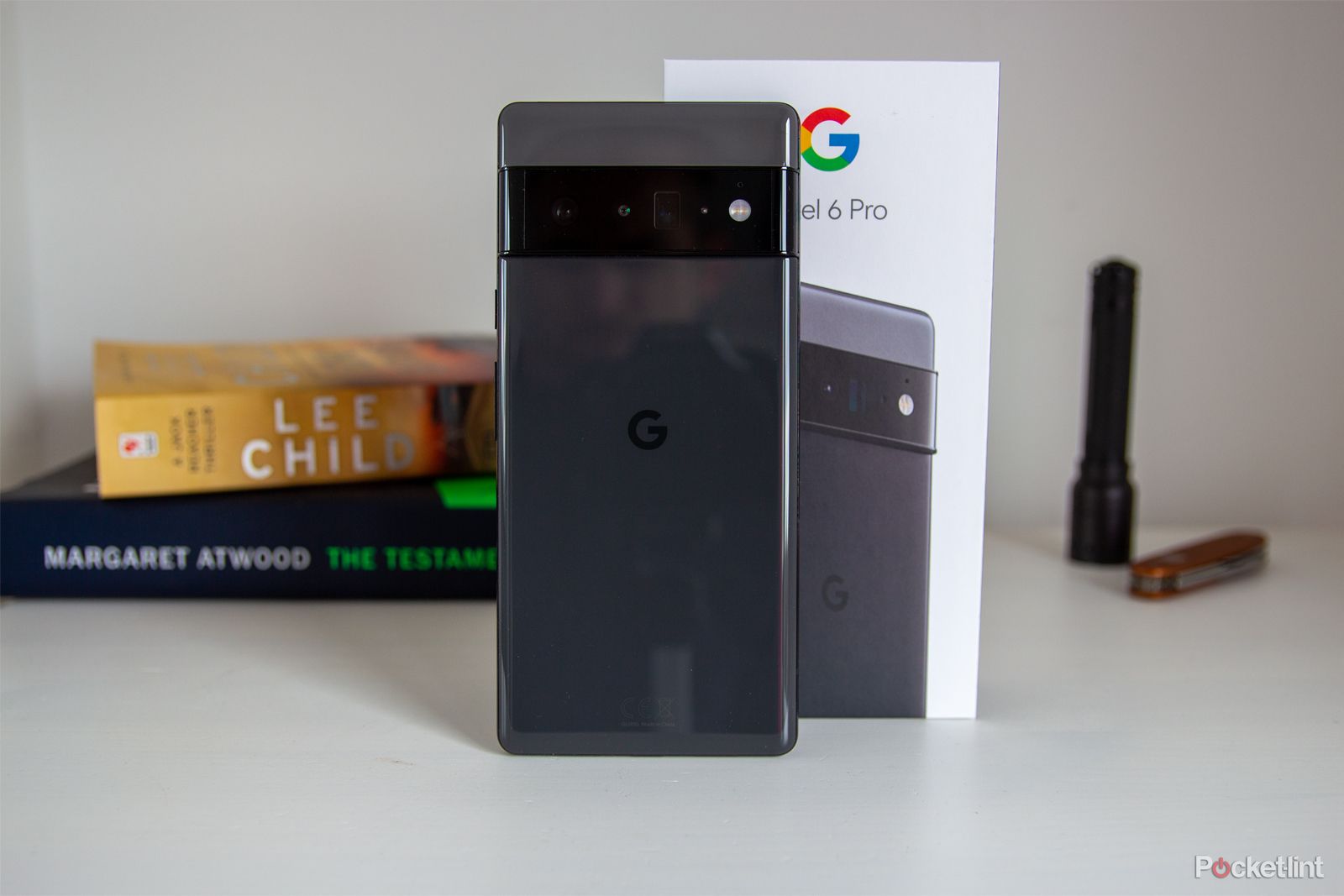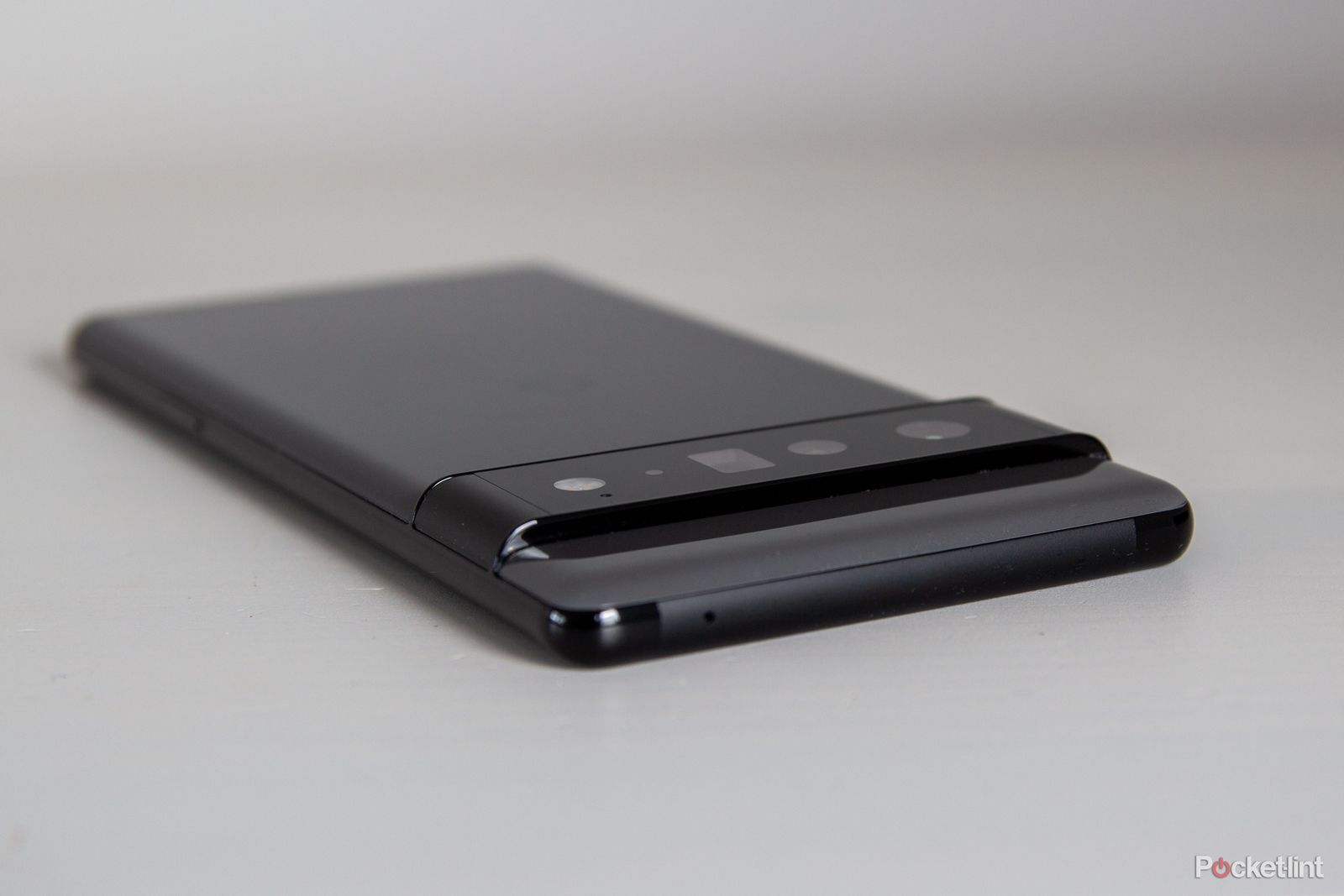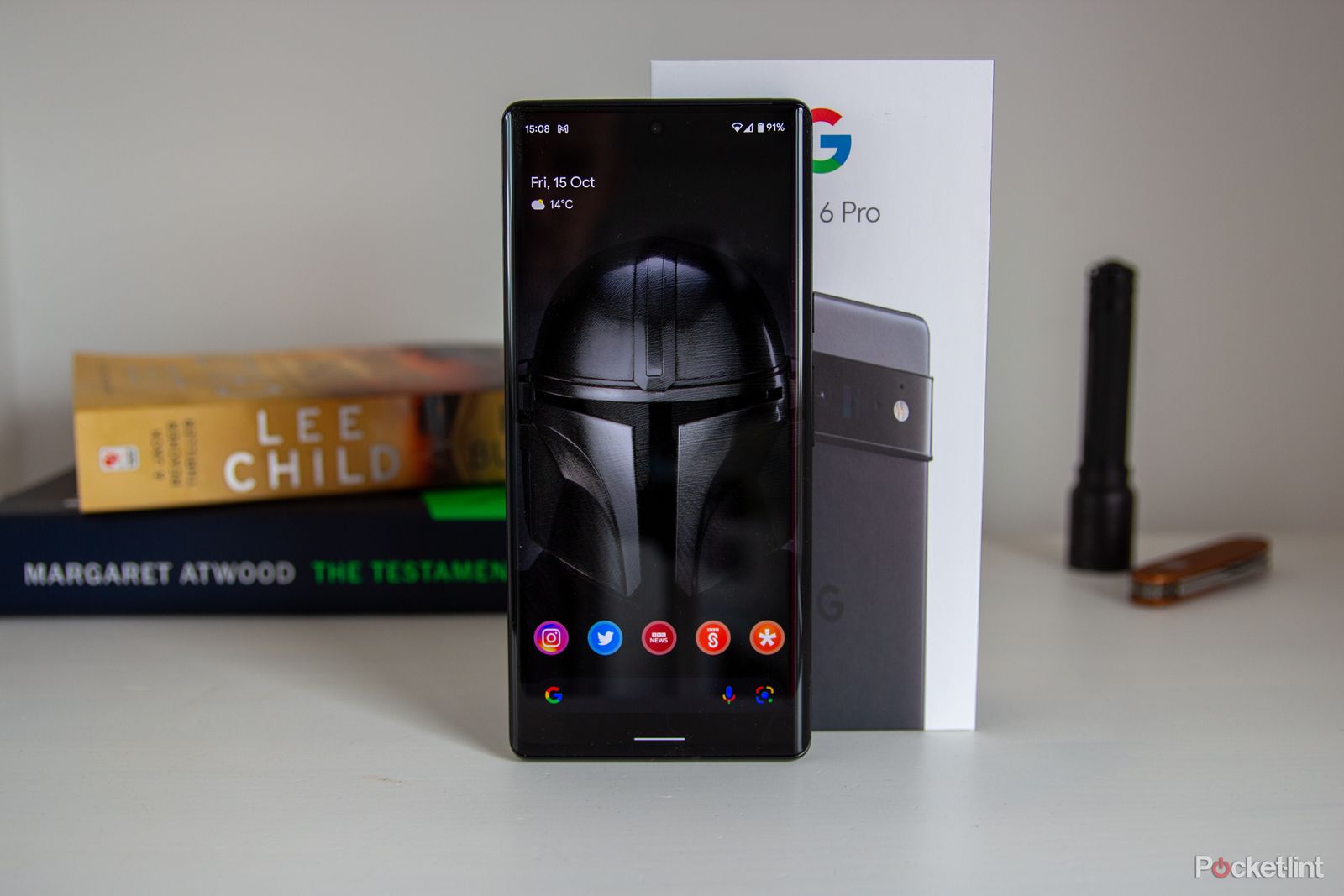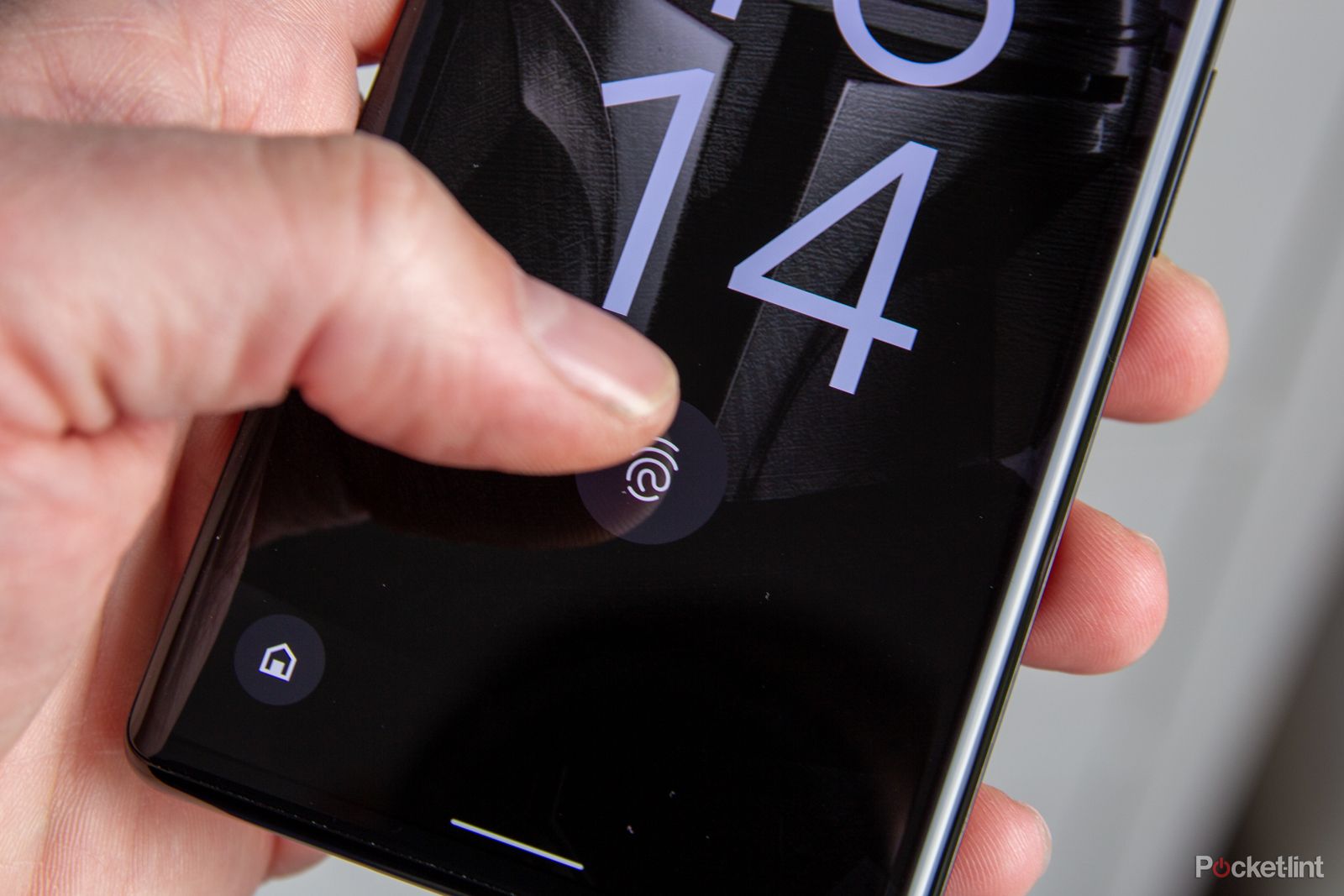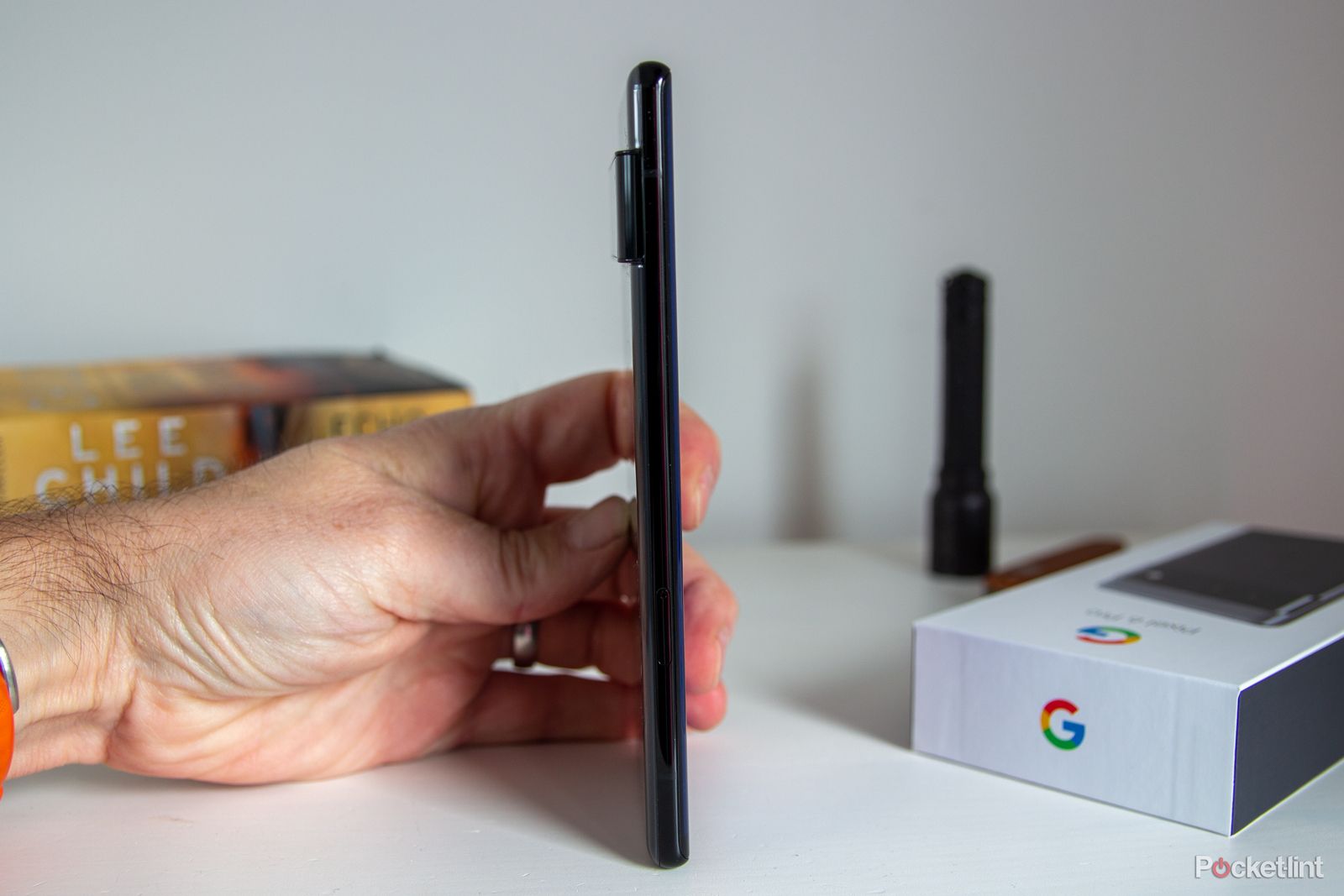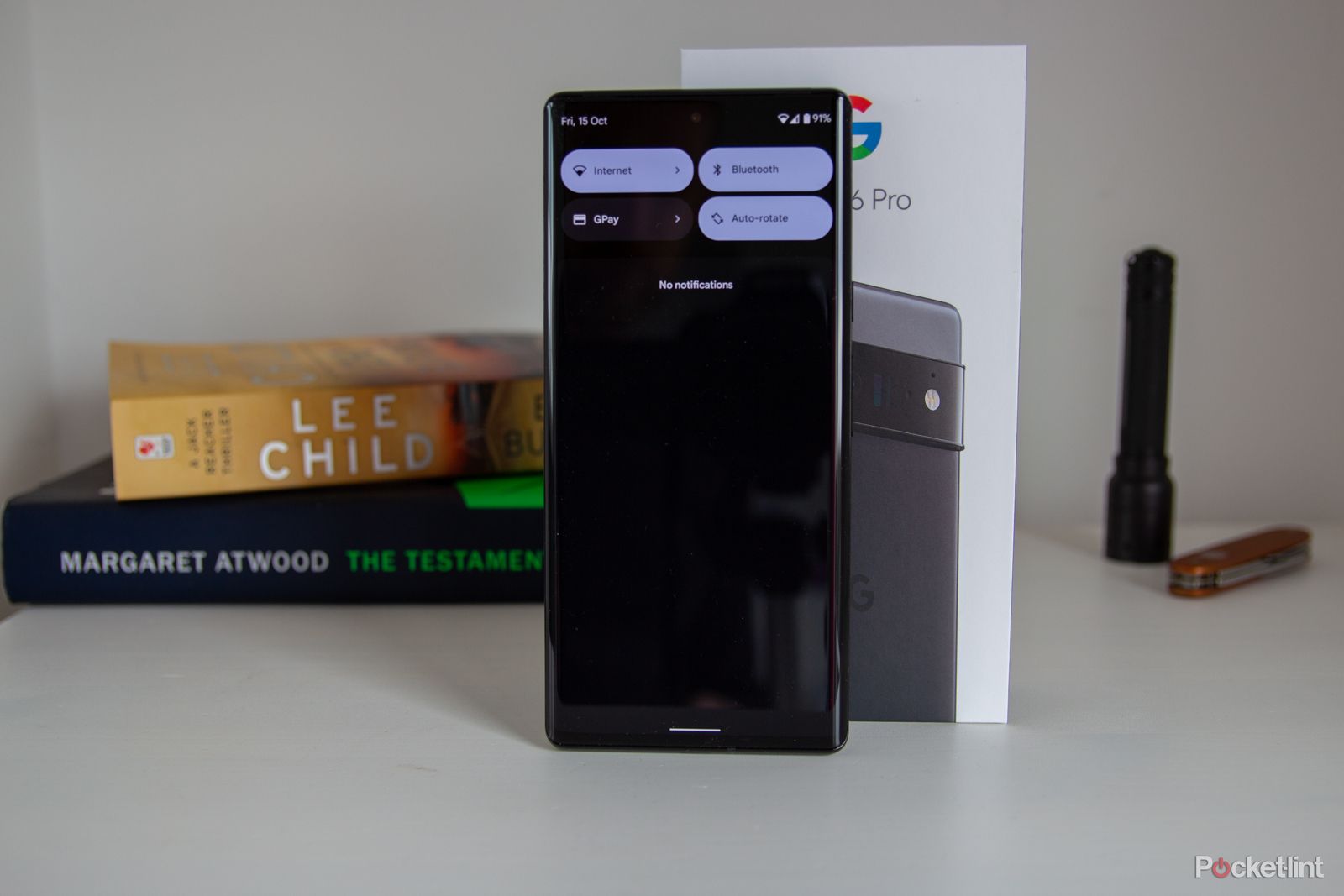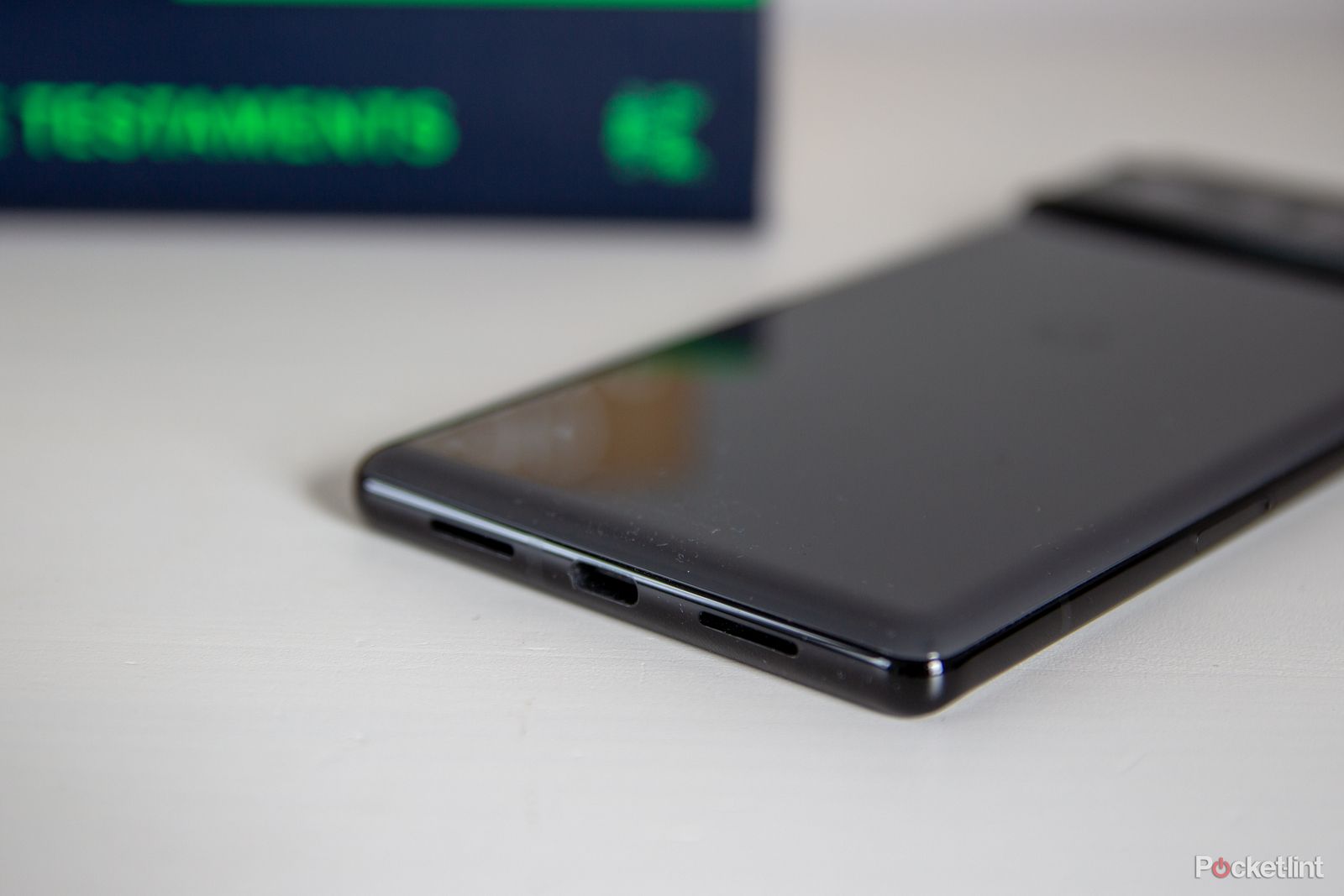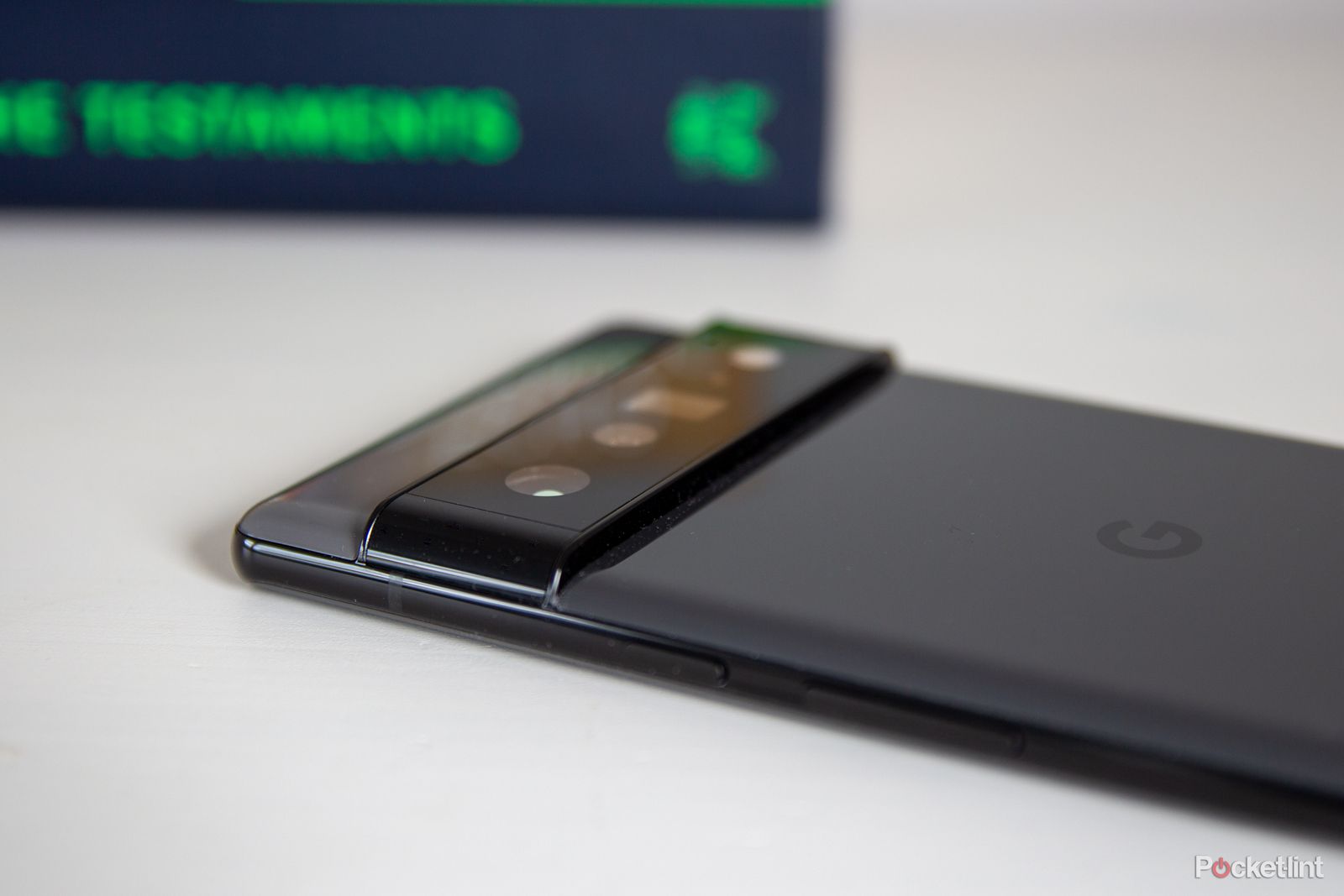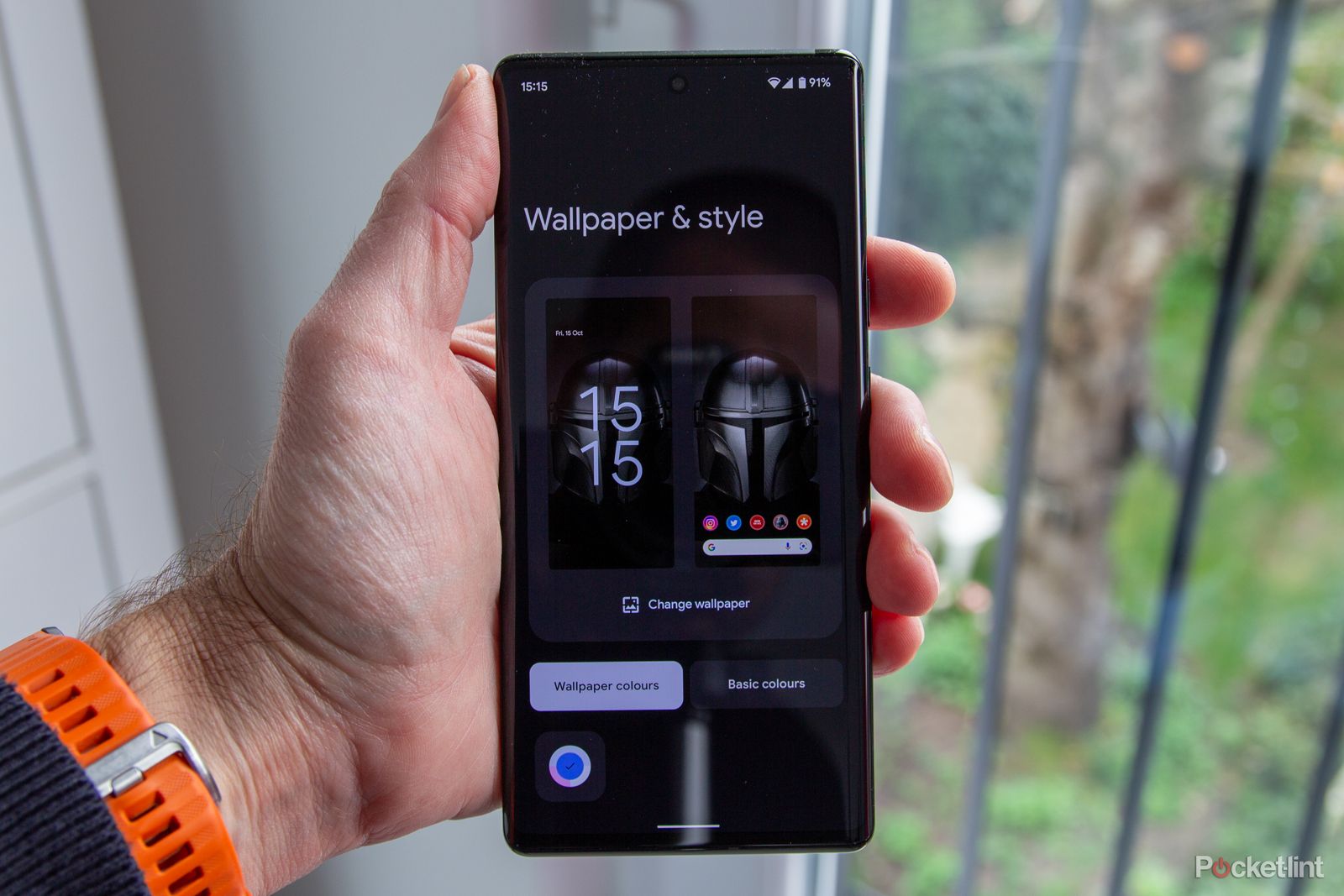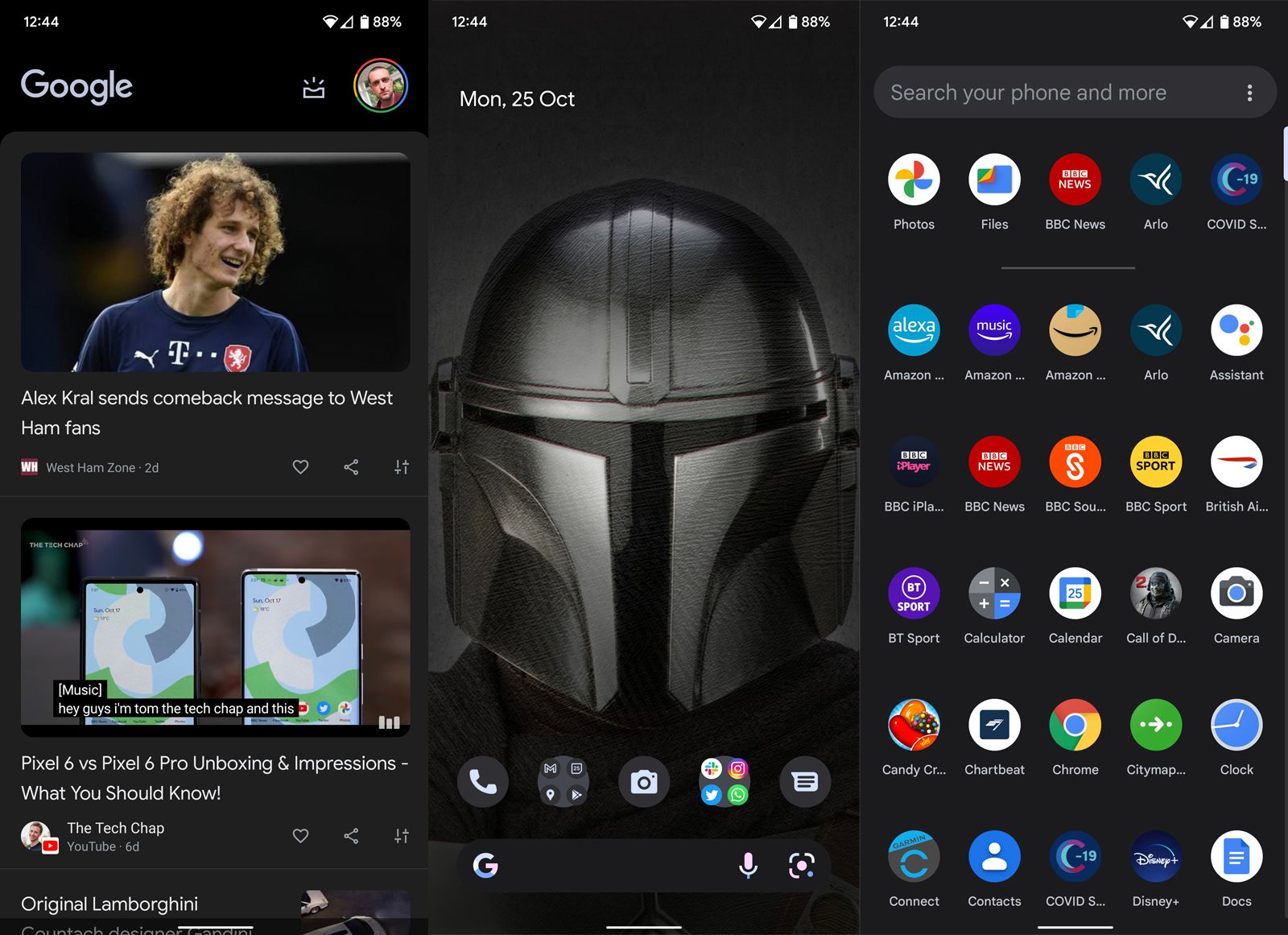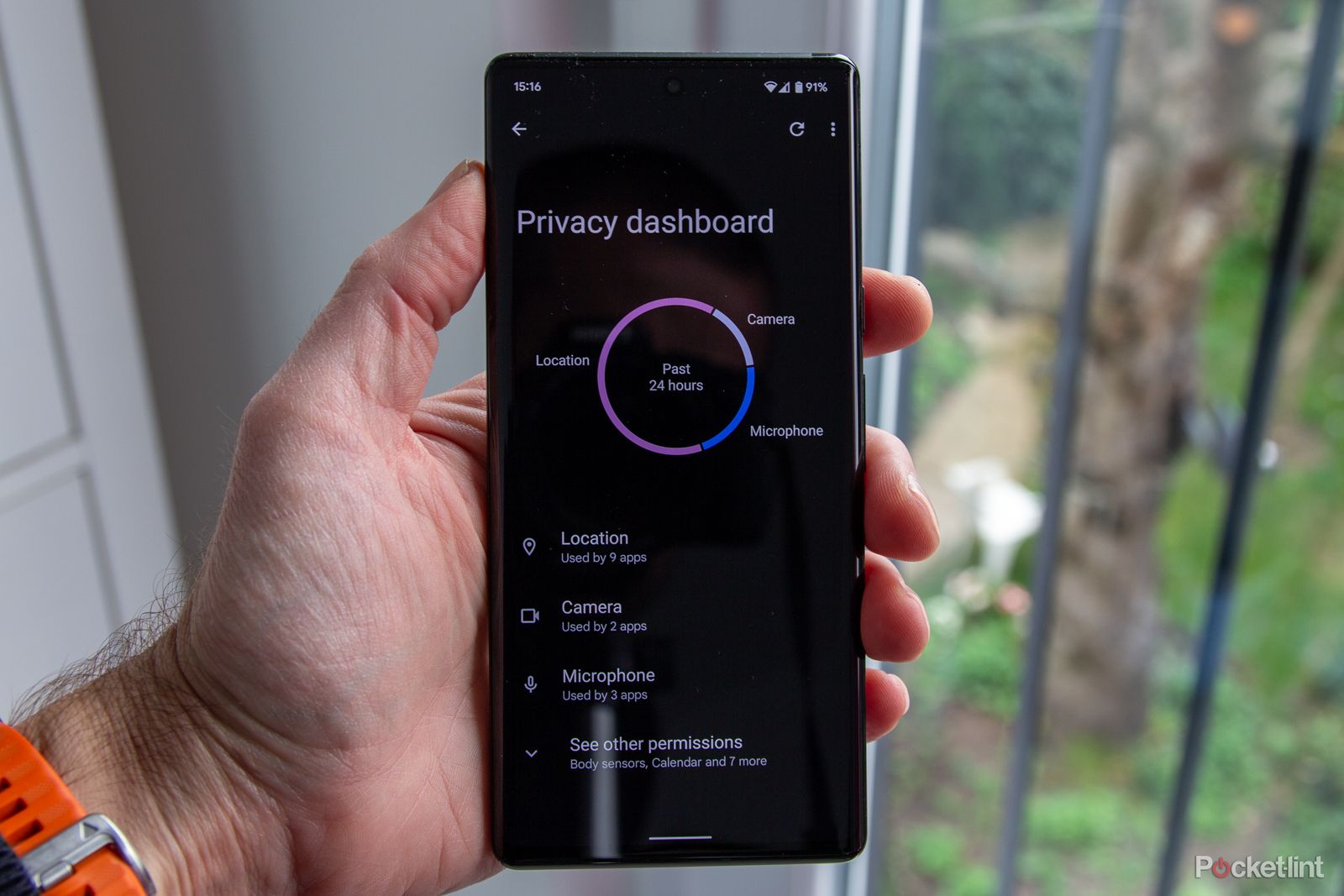If Google's Pixel line of phones appeared to stumble in 2020, then 2021 is all about coming back stronger. The Pixel 5 launched as a mid-range device, seemingly stepping away from flagship ambitions and, while it offered some interesting elements, to many it felt as though it lacked ambition. It was, ironically, the perfect phone for 2020.
With refreshed enthusiasm in the air for 2021, we have the Pixel 6, alongside a new flagship, the Pixel 6 Pro. The latter really feels like Google's most ambitious phone yet - a real coming of age story.
Our quick take
The Pixel 6 Pro has raised its game in the smartphone stakes, presenting an experience that's closer to flagship than any Pixel before it.
It's competitive, with a camera system and display that will take on many other top-tier devices, while offering a price that will cause some of the big names to double take. The agressive pricing makes the Pixel more enticing, sending the signal that Google actually wants to sell these phones.
As a showcase for what computational photography can do for you, the new camera has plenty to shout about - and that's likely to dominate discussions around the new Pixel. But there's a sense of completeness across this device too. Bold design, the great display, good speakers, great performance from Google's new Tensor hardware, and a reliable timeline for future updates.
In a time when the Android phone landscape seems to be distilling into Samsung on one side and newer companies such as Xiaomi, Vivo, Oppo on the other, the Google Pixel offers broad appeal for those looking for flagship performance but at a slightly lower price.
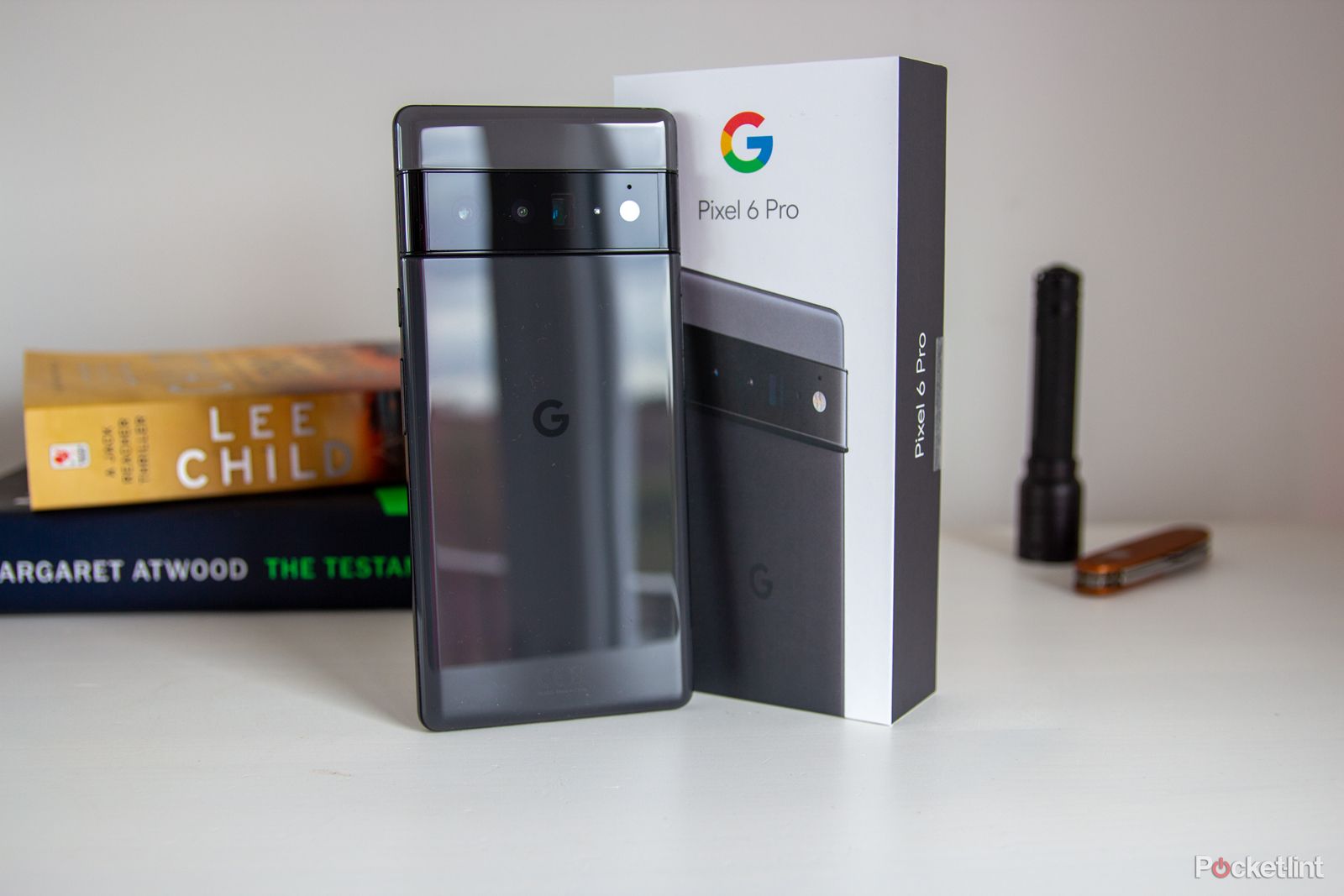
Google Pixel 6 Pro - 4.5 / 5
| FOR | AGAINST |
|---|---|
|
|
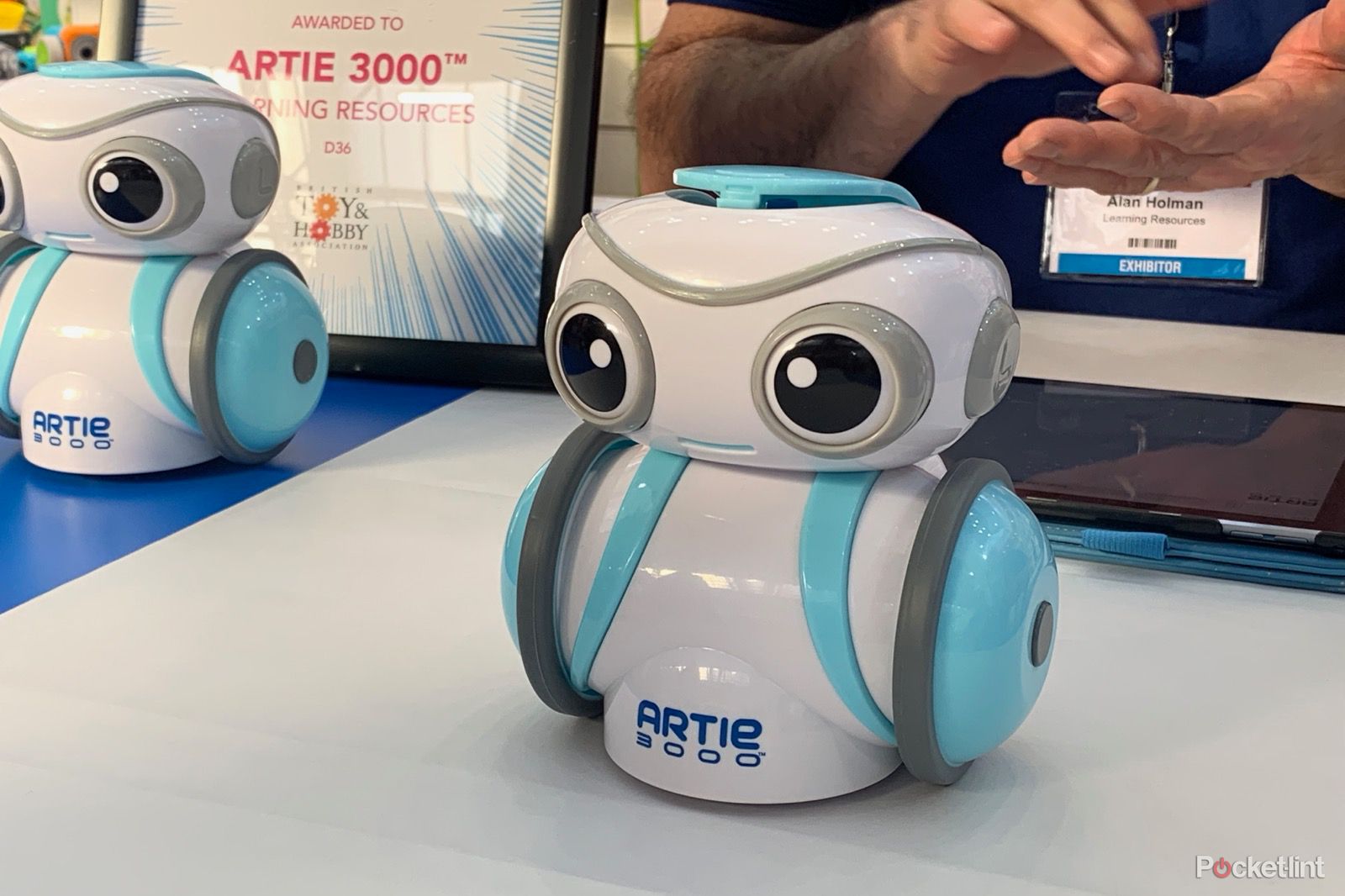
Artie 3000
Artie is a great way to learn some basic coding, but also really good fun.
Design and build
- Dimensions: 163.9 x 75.9 x 8.9mm / Weight: 210g
- Alloy frame, Gorilla Glass Victus
- IP68 dust- and weather-sealed
The Pixel 6 Pro is similar in size and weight to the Samsung Galaxy S21 Ultra and carries with it many of the hallmarks of premium smartphone design.
It steps up over the Pixel 6 with a "waterfall" display, curving over the edges, matched with the curving of the glass of the rear panel. An alloy unibody runs through the centre of the phone, emerging with a polished finish around the edges, while also framing that camera array on the rear.
It's the back of the phone that people have been talking about - and rightly so. When Google launched the Pixel 4 with its camera square on the rear it was designed to stand out. On the Pixel 6, the camera is the design.
There's a retro feel to it - especially with some of the colours being offered - and long gone are the days where we saw the likes of Huawei CEO, Richard Yu, exclaiming "no bump!" from the stage; the Pixel 6 Pro is manifestly bump.
The quality of the finish is great, save for one minor detail: the camera array, sitting between the metal bands of the frame, is actually three sections comprised of the centre and the curved parts on either end. That means there are two seams in this section that we wish weren't there.
Moving on there's IP68 protection, which is flagship-grade waterproofing, while the glass front and back are Gorilla Glass Victus, the best that Corning offers and that should at least protect against scratches - it doesn't resist against fingerprints though.
Within the design there are stereo speakers, with a long slit across the top of the display where it meets the frame and an orifice on the bottom of the phone. There's no 3.5mm headphone socket though, so it's wireless only. The speaker quality is pretty good, with plenty of volume to create a great experience when watching ad hoc videos or when gaming.
Display
-
6.7-inch LTPO OLED panel
- 3120 x 1440 resolution (512ppi)
- 120Hz (adaptive) refresh rate
- 19.5:9 aspect ratio
- HDR
There's a large 6.7-inch display on the Pixel 6 Pro, with the Pixel 6 coming in smaller at 6.4-inches. The Pro model also differs from the regular with a Quad HD+ resolution - that's 3120 x 1440 pixels, for a pixel density of 512ppi - giving it an even more pixel-packed finish.
That panel is the same size as you'll find in the iPhone 13 Pro Max, but a little higher in resolution, meaning the Google phone has the ability to display nice and crisp details. Unlike its rivals, such as Samsung's Galaxy S21 lineup, there's no option to reduce this resolution. You can choose the colour, though, with natural, boosted and adaptive offered - the last being the default and likely most popular option.
This is an LTPO OLED display, meaning it can offer adaptive refresh rates. That will see the display actively switching to suit the content it's displaying, with a range from 10-120Hz. The idea is that static content, like an ebook, would be at 10Hz so you're not wasting battery refreshing the page, while fast scrolling can happen at 120Hz to reduce tearing and make it appear smoother. You can, if you wish, turn it off and stick to 60Hz refresh instead.
The Pixel 6 Pro has a great display, full of quality, offering great colouration to your content. There's ample brightness too, so it will deal with brighter sunshine.
There's a punch hole to the top of the display for the front-facing camera, while Google has also moved over to offering an under-display fingerprint scanner on the Pixel 6 models. That keeps the rest of the design clean - and while we never had a problem with fingerprint scanners on the rear, certainly, many will welcome its new position on the front. We've had no problems with the scanner overall, finding it swift to unlock the phone with a little haptic acknowledgement.
Hardware
- Google Tensor 5G processor
- 12GB RAM, 128/256GB storage
- 5003mAh battery, 30W wired / 23W wireless charging
Where the Pixel 6 Pro makes a departure from many other devices on the market is in its hardware. Sitting at the core of the phone is Google Tensor, Google's own design of system on chip (SoC).
Google claims that that the phone is up to 80 per cent faster than the Pixel 5, although that was on mid-range Snapdragon 765G hardware - and we really don't know what Google bases these comparisons on. Having used both phones, yes, the Pixel 6 Pro does feel smoother and faster - and every inch the flagship experience.
Google says its hardware has been four years in the making and a large part of what Tensor wants to do is boost the artificial intelligence and machine learning of devices - and allow that to run on the phone rather than in the cloud, making it faster and more secure.
The performance from Tensor is excellent - and while it's likely to be a focal point for discussion around this phone, having used plenty of Snapdragon 888 devices this year, it's hard to notice any particular differences. Synthetic benchmarks will likely fuel the argument back and forth about which is best, but in real day-to-day use, it's a flagship experience.
If there's one area that might raise an eyebrow that's when the phone is under heavy load. During longer gaming sessions you'll find that the Pixel 6 Pro will start warming up - which goes hand-in-hand with faster-than-average battery drain, so not unusual - but here it makes a noticable difference to overall endurance.
Fire up Call of Duty Mobile for a couple of hours and you'll feel the warmth and that faster battery drain - in some cases faster than other flagship devices. If long hardcore gaming is your key focus, you might want to consider a gaming phone instead.
Google Tensor supports 5G connectivity and there will be a number of different versions of this phone - a Sub 6 model, and versions that include mmWave too. There's also Wi-Fi 6E support and Bluetooth 5.2 - as well as ultra-wideband (UWB). We've found the 5G connectivity and speeds to be great.
On connectivity we have one minor gripe which is really about Android 12: the Quick Settings now offers "Internet", with both cellular and Wi-Fi in the same area. That means it takes two taps to turn off Wi-Fi rather than just the one of older Android versions. Why does this matter? When you walk out of home and want to stream music, the phone will hang onto that Wi-Fi network far too long, so the music stops. We'd much rather just have the old Wi-Fi Quick Setting button to avoid that situation.
Google details that the UWB functionality isn't enabled at launch. Without anything to test it with, that probably doesn't matter - but we're expecting the likes of Tile Ultra in 2022 and compatibility with cars like the BMW iX in the future too.
There's no microSD - something that Google shuns perennially - while 128GB and 256GB options provide ample storage.
There's a single USB-C on the bottom of the phone, allowing charging of the battery at speeds up to 30W, although there's no charger in the box, just a cable. That means you'll have to provide your own charger.
It's not the fastest charging around - designed for a USB PD 3.0 PPS charger - but that'll still be speedy enough to keep most users happy. On the wireless charging front there is support up to 23W, but only using the Google Pixel Stand (2nd gen). It will also support 12W wireless charging from a Qi wireless charger.
Google is claiming that you'll get 24 hours of use from the Pixel 6 Pro or 48 hours if you use the extreme power saving mode, although the latter restricts what you can do with your phone, disabling a lot of the apps. As the name suggests, it's an extreme choice.
The battery, as always, depends on the usage. As we said, those long gaming sessions will drain the battery more rapidly - which is often the case on larger phones - and may require a top-up during the day. But on lighter days or during typical use - when messaging, taking the occasional call, snapping a few photos and browsing social media - you'll find it lasts much better. Typically, on such days, we'll reach the end of the day with 50 per cent remaining.
Cameras
-
Triple rear camera array:
- Main: 50-megapixel 1/1.31in sensor size, 1.2μm pixel size, f/1.85 aperture, optical image stabilisation (OIS)
- Telephoto: 48MP, 1/2in, 0.8μm, f/3.5, OIS
- Ultrawide: 12MP, 1.25μm, f/2.2
- Front: 11.1MP, 1.22μm, f/2.2
There's a completely new camera system in the Pixel 6 Pro, pairing up a higher resolution main, a folded type (periscope) telephoto, and an ultrawide. This is one of the areas that this phone differs from the smaller Pixel 6 - which misses out on the telephoto.
While the composition of the cameras has changed over its predecessor, much of the look and feel of the Pixel camera is much the same. There are new features, but Google is still taking the approach of making this an easy camera to use - you point and shoot and get the results regardless of the conditions.
As such, it leans on artificial intelligence (AI) and computational photography, an area where Google has really made a name for itself with the Pixel family.
Although there's now a 50-megapixel sensor, Google is using pixel binning to result in 12.5-megapixel images, combining four pixels on the sensor into one in an image. Like others, Google is claiming a larger surface area to absorb light using this method, something that can feed into supporting low-light photography and the famed Night Sight and Astrophotography modes. But unlike others, the Pixel doesn't let you take huge 50-megapixel photos - or offer a complex overlap of features. It's all straightforward.
The main camera on the Pixel 6 Pro is excellent. It has diverse skills, backed by Google's AI, delivering excellent results in many conditions. It has an uncanny ability to make dull photos more interesting - and while some phone cameras will deliver boring flat pictures in less than optimal conditions, Google raises its game, boosting high dynamic range (HDR), lifting shadows, making colours rich without being unrealistic, all resulting in better images.
A glance into a Raw image file can reveal how much Google is doing here to clean things up, smoothing away image noise at higher ISO sensitivities, sharpening to bring back details, correcting distortion from lenses. While all this is happening in the background, you don't need to think about it - it just happens.
This applies as much in low-light conditions as it does in good light. The regular camera will take low-light shots without needing Night Mode and can automatically switch to Night Mode when a longer exposure is needed. Again, the amount of AI work happening here can be seen if you open the preview as soon as you take it - a dull picture is processed into something cleaner, brighter, and better right before your eyes.
The gallery below shows an HDR photo from the ultrawide camera, followed by the Raw unprocessed image file that gives you an idea of how much is changing here. It's worth saying that the processed image looks much more like the real location on that sunny autumnal walk.
There is a downside to this AI processing of course. In some conditions the HDR effect can look slightly artificial, noticable when you have small bright areas, like through leaves of a tree in the images above. This is pretty common on smartphones, but you can turn off HDR in the camera if you feel it's not the result you want.
Equally, it has often been said that Night Sight can make night scenes appear brighter than they actually are. This is true - while you'll get night shots from this phone that other phones will not match, it can, at times, make it lighter than what you're looking at.
Because AI is doing the work in this camera - there's no pretense this is about a particular sensor or lens - you get these options on all cameras. That means the front camera gets all the features that back cameras do. Some smartphones don't even consider this.
Again, it's about delivering the best results it can. As a result, the front camera - which is 11.1-megapixels in the Pixel 6 Pro - is one of the best selfie cameras out there. There are two angles offered - 1x or 0.7x - but Night Sight, Face Unblur, Portrait, Motion mode all work here too. Without these features, it still takes outstanding photos, now less contrasty than from older Pixels. It doesn't feel like you're compromising using the front camera over the rear, which is the case with many rivals.
Google talked up its AI cleaning of digital zoom images on previous phones, but now it can offer 4x optical zoom from the folded lens arrangement, and 20x digital zoom beyond that. That takes the Pixel camera beyond anything that's been offered previously. While it's not the same as the 10x optical cameras you might find out there, it's now hugely versatile.
One of Google's technologies here is Super Res Zoom. This has been around for a few years, using mulitple images to enhance digital zoom over simple sensor cropping. It's really effective, meaning those 20x digital photos are pretty good, certainly usable rather than just being a gimmick. Yes, fine detail will still be mushy at long range, but on the whole you'll be happy with the results.
There's a lot more that's new for the Pixel camera beyond the physical lenses. When it comes to shooting, Motion Mode will let you capture an image and then give the impression of motion in it. There are two modes available: action pan is a fast moving subject in an image, like a car or bike going past; long exposure is for moving things in still scenes, like waterfalls. Both use AI to figure out what's supposed to be moving and what's not. You can get some great results - and it's all very easy to use.
On the editing front, Google Photos gets a couple of new options, including Magic Eraser which will remove distracting elements from photos. It will offer to scan a photo to suggest things to remove, but we found the best option is to pinch zoom and then highlight what you want removing. Things will just vanish from photos and it's really effective. In the collection below, the first image shows the original and the second has use Magic Eraser to remove the car and sign post in the background.
Face Unblur attempts to remove the problem of moving faces, restoring them back to some sort of sharpness. While the example that Google gave was for children, we've found it really effective on selfies, especially when riding a bike. A little logo will appear in Google Photos when Face Unblur has cleaned things up. Again, it's a seamless technology, there's no turning it on or off.
One other vital new inclusion for portrait photography and photography of people in general is Google's Real Tone push. This uses image processing for different skin colours that isn't biased to white skin. Regardless of your skin tone, your selfies and group photos should look a lot more realistic and natural, so you don't get unnatural green tints or grey/ashy looks in photos containing people with darker skin tones.
Across Google's cameras, the AI sitting underneath pulls everything together and makes the Pixel 6 Pro one of the most satisfying smartphone cameras to use. Yes, it basically does everything for you and no, you can't dive into manual shooting modes. But in pretty much every situation we've used it in, we've got results that have surpassed our expectations - it's just a great camera to use.
Software polish
- Android 12
- 3 years of software/5 years of security updates
The Pixel 6 Pro launches with Android 12, with a few unique tweaks that you'll only get on Pixel. Many phones have been rolling back to offering a cleaner Google software experience, but the Pixel is always front of that queue for updates - now with a three year version promise, and five years for security updates.
The big change is Material You. This is what Google is mostly talking about in Android 12, wanting to make it easy to customise the phone to your preferences. It means you can pick a wallpaper and adapt the phone's theme to colours related to that wallpaper. You can also switch the icons to be themed to fit in, although that only appears to apply to Google's own apps and services.
It's just about as easy as it could be and really effective, allowing sweeping changes through a number of apps to make your device more unique. The only part that lets it down is the themed icons, an element of the software that's currently in beta. This changes your app icons to match the coloured theme too, but it doesn't work with third-party app icons - so if you enable it you'll end up with a mish-mash of colour icons interspersed with themed ones.
There are small changes all over the place, like being able to swipe down the Quick Settings and see the battery percentage change to show you how long it's actually going to last, although we've found this to be a little random. Sometimes it tells you the percentage, sometimes the time your phone will run out of battery.
Google also continues to push real-time translation in its devices, with the ability to translate in messaging apps like WhatsApp or in the messaging sections of other apps, like Twitter or Instagram. This is really accurate, now including punctuation, so voice input is more useful than ever.
Then there's a boosted focus on privacy, allowing you to see - via a green icon on the display - if your camera or mic is live. You can tap through to see which apps are using it. Via the Privacy Dashboard you'll be able to quickly see what is using things like location access and how often, so you can take more control. You can also toggle off the camera or mic if you want.
There are new options for the home screen - including suggested apps - which will change the icons on your home screen based on what your phone thinks you are about to do. We've seen this before in the apps drawer, but now it's got pride of place on the main page too, if you want it.
The changes ushered in by Android 12 make the Pixel 6 Pro feel much more like a phone ready to compete with the likes of Samsung's best. There's personality to it which hasn't always been so keenly felt before, which is a refreshing change that helps the Pixel to standout and feel unique.

Artie 3000
Artie is a great way to learn some basic coding, but also really good fun.
To recap
An outstanding camera system and plenty of power blend to make this flagship an enticing option. It's a confident step forward for Google, offering a phone that's more ambitious and more competitive against its rivals. Priced to appeal, you're getting a lot of phone for the money, while getting the Pixel advantage of the best updates that Android OS offers.

